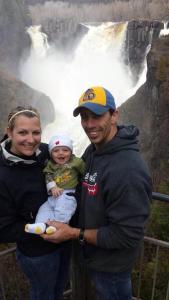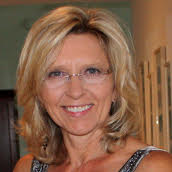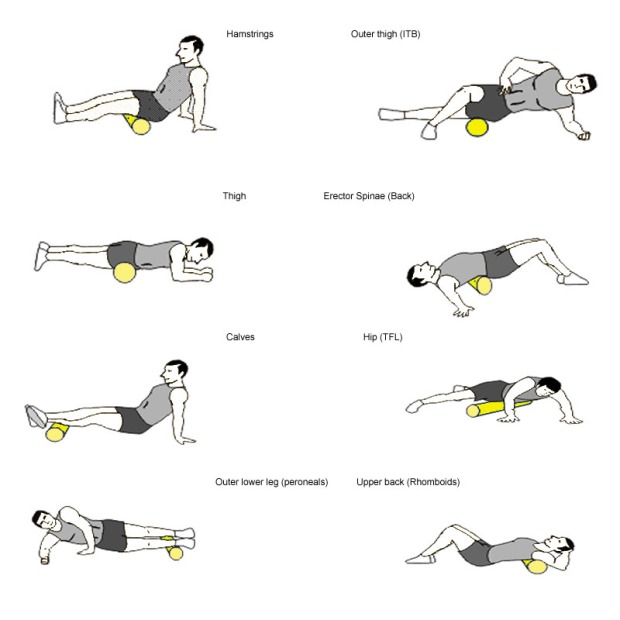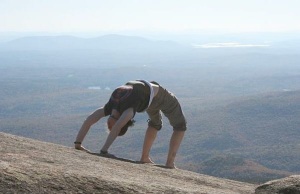Archive for category Fitness
No such thing as TMI
Posted by annbruck in Fitness, Self Practice on July 17, 2015
When it comes to providing the best possible service to my clients, I need to know as much as I can about them as a whole. The first time we meet, I ask a lot of questions. This means health history (both their own and possible family), medications, current/past injuries, nutritional habits, goals, aspirations, experience with previous trainers, their likes/dislikes for certain exercises. The more I know, the more individualized a program I can create.
Often times clients will leave out information, thinking that it is irrelevant, maybe a little embarrassing or they just forget. Below are a few key things to share with your trainer/wellness provider so they can best serve you.
- Any chronic or acute discomfort, injuries, physical limitations, medical conditions or procedures.
- Changes in nutritional programs such as cleansing, supplement use, testing out a new format such as vegan, Paleo, etc.
- Modifications to time committment, daily responsibilities, or additional stress.
- If you are unhappy with the results you are getting, have the conversation about what changes can be made to make sure you are moving in the right direction.
The reason it is called personal training is because it is specific for you. Help to create an open dialogue and share what you can. You will see results that much faster.
be well-
Even a weed turns into a Flower
Posted by annbruck in Fitness, Self Practice, Yoga/Meditation on April 29, 2015
Last night I came across a video portraying scenes around Baltimore and all that has been happening this week. Unlike most of the violent acts taking place, this was something different. Several clergy from all denominations were linked arm in arm, marching down the street. A true sign of peace and compassion. Ahimsa is a Sanskrit term for “non-violence,” and that is exactly what these men and women were practicing.
The following is taken from an article written by Dorna Djenab called Ahimsa: The Yoga Practice of Non-Violence-
The essence of ahimsa is non-violence of our own heart. The violence we inflict on each other is only the outward manifestation of the war raging inside ourselves and it is only by stopping the war within that we can stop the war without.
Violence is manifested in actions, in words and in thoughts. We may consider ourselves non-violent people but violence can work on very subtle levels. It has many disguises.
Thoughts of guilt, shame, resentment, disappointment all have a seed of violence within them. Words like *should* and* must* are the same. When we are unable to forgive ourselves or someone else, when we carry resentment; when we expect far too much of ourselves and put the responsibility of the whole world on our shoulders; when we expect the whole world to run according to our liking we are being violent towards ourselves and the rest of the world. When we don’t act according to our truth, but out of our fears, we are being violent to ourselves… Truth and nonviolence are inseparable. As Ghandi said: When I look for Ahimsa, Truth says, ”Find it through me.” When I look for Truth, Ahimsa says, ”Find it out through me.”
Non-violence is unconditional love, it is true compassion. We achieve that non-violence by learning to love and be loved; but how is it possible to love and be loved if we choose to escape or ignore some aspects of ourselves?
Yoga encourages us to meet our inner darkness impartially and compassionately, so that it can be transformed without being acted out in the world. We practice how to meet our inner violence nonviolently and how to express our negativity without hurting anyone, including ourselves. When we learn to discharge our negative energies with the positive intention to transcend these aspects of ourselves, we contribute to spreading peace in the world.
On the mat, intend to practice non violence in action and perform the poses gracefully without force. Intend to respect and love your body’s limitations. Have the intention to practice non violence in your mind. Watch and become aware of your thoughts and see if there are any that contain seeds of violence towards you or another. Once you’ve become aware, you won’t need to push it away, just recognize it, watch it come to your awareness and watch it leave. Thoughts come and go. It is by holding onto them and repeating them over and over that they become the source of our violent actions, or violent words. If you just observe them, without reacting to them, you’ll see that they will leave your awareness as easily as they came.
When we allow ourselves to fully experience the hate and pain within us without cringing, violence, hatred and pain will disappear and open doors to new understandings and liveliness. Just as a flower begins its journey from a seed beneath the earth, non-violence begins out of self acceptance and love of the true Self, deep within the human heart. Yoga leads us to a peaceful reconciliation with our own true nature.
be well-
What matters to you?
Posted by annbruck in Body Mechanics, Fitness, Self Practice on April 7, 2015
I would like to give a shout-out to my sister and her colleagues as April is OT Month.
Occupational therapists play a vital role in helping individuals participate in things they want and need to do and to help manage their health to be as active and independent as possible. One of the first questions they will ask is What matters to you?, rather than What is the matter with you? Common interventions include helping children with disabilities to participate fully in school and social situations, helping people recovering from injury to regain skills, and providing supports for older adults experiencing physical and cognitive changes.
Many people question the difference between physical therapy and occupational therapy. PT deals with pain, strength, joint range of motion, endurance, and gross motor functioning, whereas OT deals more with fine motor skills, visual-perceptual skills, cognitive skills, and sensory-processing deficits.
Occupational therapy is often thought of for adults only. But that is not the case. According to the AOTA, kids with these medical problems might benefit from OT:
- birth injuries or birth defects
- sensory processing disorders
- traumatic injuries (brain or spinal cord)
- learning problems
- autism/pervasive developmental disorders
- juvenile rheumatoid arthritis
- mental health or behavioral problems
- broken bones or other orthopedic injuries
- developmental delays
- post-surgical conditions
- burns
- spina bifida
- traumatic amputations
- cancer
- severe hand injuries
- multiple sclerosis, cerebral palsy, and other chronic illnesses
The “occupation” of children is to thrive, and occupational therapy practitioners work with children and young adults, from infancy through college, and their families to facilitate participation and independence.
Thank you to all OT’s as they help to improve our lifespan.
be well-
21 Miles, all Smiles
Posted by annbruck in Body Mechanics, Fitness, Self Practice, Yoga/Meditation on March 29, 2015
Signs of spring are popping up all over the place. The snow is melting, a few flower buds are sprouting and many of the runners preparing for the Boston marathon likely had their “last long run,” before Marathon Monday. Today’s weather conditions were much like what I ran through last year at this time for my last long run prepping for Boston, with my dear friend, Alex. A few layers needed but the sun was shining. Here is a before and after picture at the beginning of our 21 mile run.
With running season ramping up, I asked my running expert friends and family members for some race day tips, whether you are training for a 5k, marathon, ultramarathon, or an event like Ragnar. Here’s what they had to say.
- Trust in your training. If you have followed your training plan, trust that you are able to finish the race.
- Come race day, DO NOT CHANGE anything! This includes nutrition, pace and clothing. Do not buy any special shorts, pants or tops to wear race day. If you have not trained in it, do not wear it – you don’t know if any discomfort or chaffing will result in new clothing and you don’t want to deal with pain caused from new hot spots.
- Don’t get caught up in the hype…ie, don’t let the atmosphere and other runners alter your pace. You have trained to run a certain pace, don’t end up bonking because you went out too fast. You want to have a negative split, meaning your second half of the race is faster than your first half.
- If you have friends/family attending the race, have them spread out throughout the course. If they are able to get to desolate/isolated parts of the course, even better. It’s great to see familiar faces in lonely parts of the course.
- Many races have a camp to hang out at before the race. Bring toilet paper, you don’t want to get stranded.
- Even though you may not feel thirsty, it’s usually a pretty good idea grab a drink at the rest stops. Alternate between water and sports drinks.
- Have fun and enjoy the experience.
be well-
Practicing what we Preach
Posted by annbruck in Body Mechanics, Fitness, Nutrition, Self Practice, Yoga/Meditation on February 9, 2015
Ambitions have started to fade for many people as we head into the lull of new years resolutions. Motivation, or lack of, affects every one of us at some point- including fitness professionals. I thought it might be a great idea to reach out to some friends and family in the health and wellness industry to get their strategies for keeping motivation and practicing what we preach. Here’s what a few of them had to say-
Kelly- Director of Healthy Living, Minnesota
I always have a water bottle with me, I get 7-8 hours of sleep each night, I lift weights regularly, and enjoy hiking and biking outdoors (particularly at state park trails) any chance I get with my husband and 1-year-old son.
It’s important to me that I lead by example so that I can influence others daily so that they can live their lives to the fullest! Many times I share my passion and excitement for outdoor adventures my family has recently done and others want to do the same which is great!
Lynda- Trainer and Group Exercise Instructor, Virginia
Every day is a struggle for me and I know that there are many worse off than me. I used to be able to jump out of bed, go for a run, work out, look after my job hold down a full-time job. But now I force myself to do something. It bothers me a lot that I do not have the energy or enthusiasm I once had. In fact it depresses me.Today was a bad day. I felt so tired. I went to the gym…walked in…looked at the treadmill…and walked out. I felt so hungry, so tired and I went to bed. Tomorrow is a new day.
Courtney- Professional Wellness Coach & Personal Trainer, Virginia
First, some clarification on “wellness coaching.” Where personal trainers and nutrition counselors (who are sometimes now referring to themselves as “health coaches”) address the physical aspects of their client, a coach addresses the behavioral aspects. Wellness coaching is much like life coaching with a more specific focus, i.e., incorporating exercise, changing eating patterns, stress management, weight loss, work-life balance or any lifestyle factors that will increase a client’s health and wellbeing. Most clients know what to do and how to do it. They just can’t seem to figure out why they can’t do it on a regular basis. Coaching helps the client uncover behavioral patterns, self-talk, beliefs and perceptions that are keeping them stuck. It helps them shift their paradigm from the lifestyle they are living to the lifestyle they desire.
How I practice what I preach: I understand that living a healthy life is a choice. It’s not always an easy choice and there are many things that can get in the way. However, it is still a choice as is everything we think, say, and do. I practice what I preach by:
- Working out most days of the week on a regular basis. I don’t love working out, but I love how I feel because of it. I do some sort of cardio (run, power walk, elliptical, or bike) for 30-40 minutes and an integrated weight-training circuit for 10-30 minutes. The time depends on my schedule and how I feel. The key is to “Just Do It!” even if it’s for only a few minutes. You’d be amazed how much you can get in just 10 minutes.
- I keep up with the LATEST research on food and nutrition. As a result, I eat mostly vegetables, fruits and lean meats, fish, eggs, and poultry. I limit grains (white flour especially) and processed foods.
- I meditate most days of the week for 20-60 minutes. I mostly use guided meditations.
- I try to get 7-8 hours of sleep per night. I say “try” because my body doesn’t always cooperate.
Why is it important to practice what I preach? It’s important to practice what I preach because the only one that can affect my level of health is ME. I am 59 years old and I don’t believe aging has to mean physical decline. I believe I can be as healthy at 80 as I am today if I continue to keep up with the latest breakthroughs in neuroscience, diet, and exercise and practice what I preach.
The last few weeks have been difficult for many people because of grey skies, cold weather and record-breaking snowfalls. Reignite the flame, find what motivates you to keep moving forward.
be well-
Tuning the Body like a Guitar
Posted by annbruck in Body Mechanics, Fitness, Self Practice on January 18, 2015
There are a lot of clichés used in the fitness industry. While attending a workshop last week, I heard another and this one really stuck with me because I can relate to the analogy.
Rather than just picking up the guitar and start jamming away, I need to make sure it’s in tune. Likewise, when I begin a workout, the body should be in tune before starting the workout. This will help reduce the risk of injury, whether during exercise or in everyday life.
90% of injuries are soft tissue injuries; sprains, strains, contusions, tendonitis, and stress injuries. Injuries can happen as a result of a single episode such as a fall, sudden twist or blow to the body. They can also happen over time from repetitive motions such as carrying a child on one hip, swinging a golf club or tennis racquet, or prolonged use of the computer keyboard and mouse.
Each person is unique and therefore, how we tune our body is going to be unique.
Below are a few examples in how we can do that.
Nerve Glides- Nerve gliding exercises encourage the nerves to glide normally as you move your joints. A nerve may not glide well if it is injured or inflamed, as it can get entrapped in the surrounding soft tissue.
Foam Rolling/Self Myofacial Release- SMR focuses on alleviating adhesions (also known as “trigger points” or “knots”) to restore optimal muscle motion and function.
Dynamic Mobility- This helps to get the joints unstuck and warm the muscles, fascia and connective tissue.
Side Step and Overhead Reach
Side Lunge with Reach
Using any or all of these techniques will help tune your body to reduce risk of injury, decrease pain and improve performance.
be well-
Simple doesn’t always mean Easy
Posted by annbruck in Body Mechanics, Fitness, Yoga/Meditation on November 21, 2014
I had a recent conversation with a new friend about my journey into yoga. Nearly ten years ago I started my own practice as a way to supplement all the physical work I was putting my body through training for triathlons. My muscles were tight, my posture was compromised and my mind was a bit chaotic. Through yoga, much of that changed.
Fast forward a few years, I attended my first 200 hour training. Here I learned much more in-depth about philosophy, the eight limbs, meditation, sequencing, anatomy and the asanas (the physical practice). This training set a strong foundation in what I do and how I approach my own practice and as an instructor.
We tend to over stretch where we are bendy and collapse where we are dense. Finding correct alignment rather than always taking the path of least resistance is a challenge. So this is where we set the foundations for future poses. Simple doesn’t always mean easy. Learning to breathe. Creating space. Taking time. Allowing ourselves to really explore. Instead of using the body to get into a pose, use the pose to get into our body….
During the conversation I had with my friend, I said that I still was not super flexible and that’s why I teach beginners. I love teaching to students who come to their mat for the very first time and can be in the same room as someone who has been practicing for 20 years. Taking a basics yoga class is something we all need.
I think it’s great that people try to challenge themselves with new and more difficult poses. But at the end of the day, a true yogi will say, “Great if I can, Great if I can’t.”
The pics below are me exploring off the mat at Mt.Chocorua in New Hampshire.
always Learning
Posted by annbruck in Body Mechanics, Fitness, Nutrition, Yoga/Meditation on October 27, 2014
The fitness and wellness industry is an interesting business. There are a lot of grey areas, with words like trainers, nutritionists, life coaches, and instructors, which are vague. Some are calling for our industry to be better regulated. The problem I see with that is, who is going to regulate? The state? The federal government?
How about we regulate ourselves. When I was explaining to a client this afternoon that I attended a continuing education workshop over the weekend, she asked who paid for it. My response, “Me.” I went onto explain that part of being a professional in this industry is making sure I maintain my certification.
Health and wellness is always changing. Therefore, I am always learning. New research comes out every day. New ways of thinking and applying methods are talked about. New pieces of equipment or accessories are invented to help us move and feel better.
My official career in this industry began in 2000. Since then I have earned a college degree in exercise science, maintained an accredited personal training certification, attended a 200 hour yoga school, and earned supplemental certifications in kettlebells, TRX, cancer and exercise, USAW Sports Performance, attended various workshops with Baron Baptiste, Nikki Myers, Annette Lang, Paul Chek, Chuck Wolf and many other recognizable names.
I believe it is vital to our industry that we hold each other accountable. The moment one begins to think there is only one way to move, create programs and train, then they are done. They have lost the drive and passion for what they do. For me, learning through workshops, books, lectures, and self practice are what help me stay motivated and working to help create a better industry.
be well-
Helping the Women we LOVE
Posted by annbruck in Fitness, Self Practice on October 7, 2014
During the month of October, it is difficult to miss all the attention towards women’s health and breast cancer awareness. Football players are wearing bright pink shoes and gloves, local communities are holding 5k and marathon walks as fundraisers, I even got a “reminder” flyer in the mail from my health insurance company yesterday.
Within a few degrees of separation, breast cancer has effected each person in this country one way or another. It takes me two hands to count my personal connections alone. My first real exposure to breast cancer was when a client of mine from the Washington DC area was diagnosed. She was being treated at Johns Hopkins and I found myself taking her to there for treatment. I would sit by her side, providing a sense of comfort. According to her doctors, on the days she didn’t feel like working out, those were the most important days to keep moving. So I made my way to her house to keep her active. I’ll never forget the last time I saw her. She was folding laundry as we sat to watch movies and I was telling her about my plans to move to Boston. She was hoping that she had raised her two adult sons to be self-sufficient, meaning she taught them how to cook, wash/fold/iron their laundry and balance a checkbook. It was just a few months after I moved to Boston that I got word she lost her battle. I was one of the few non-family member invited to the private funeral at Arlington Cemetery.
It was also about the time I was packing my bags for Boston that my Aunt Joyce lost her battle to breast cancer. I feel lucky I was able to spend a few moments with her around the holidays, surrounded by family. There is hardly a day that goes by which I don’t think about her. She was the glue that held a family together. Since then, I have had other family members, clients, friends and family friends all be diagnosed.
FACTS ABOUT BREAST CANCER IN THE UNITED STATES
(from National Breast Cancer Foundation, INC)
- One in eight women will be diagnosed with breast cancer in their lifetime.
- Breast cancer is the most commonly diagnosed cancer in women.
- Breast cancer is the second leading cause of death among women.
- Each year it is estimated that over 220,000 women in the United States will be diagnosed with breast cancer and more than 40,000 will die.
- Although breast cancer in men is rare, an estimated 2,150 men will be diagnosed with breast cancer and approximately 410 will die each year.
Breast cancer is the most common cancer in women, world-wide. The great news is that since 1990, there has been a steady decrease in death rates in part to better screening, early detection and improved treatment options.
Breast Self Exams play an important role in early detection. It is recommended that women begin getting tested with mammograms at age 40. Mammograms can often show a breast lump before it can be felt. They also can show tiny clusters of calcium called microcalcifications. Lumps or specks can be caused by cancer, fatty cells, or other conditions like cysts. Further tests are needed to find out if abnormal cells are present.
Encourage self breast exams and mammograms. Have open conversations. Donate money. Do whatever you can to Help the Women we LOVE.
be well-
I was once told…
Posted by annbruck in Body Mechanics, Fitness, Nutrition on September 26, 2014
…there are three things you should never neglect: food, feet and sleep.
Food-
The relationship we have with food is unique to each of us. And depending on what is going on in our life, that relationship may change from time to time. Handing out detailed nutritional advice is one thing I am extremely cautious about as a trainer. There are too many variables involved, so it is in my client’s best interest to refer them to a more experienced and educated person.
I am a true believer there is no one “cure-all” nutritional program. What works for me is likely very different from what works for you. Factors such as goals, metabolism, likes/dislikes of foods are to name just a few. But in general, I do encourage my clients to each as much whole food as possible. I mean, food that is typically found on the perimeter of the grocery store. Here you’ll find fruits, veggies, protein such as meat and fish, dairy and eggs. Anything that comes in a box, can or jar is likely to be processed and have ingredients that are difficult to pronounce.
Feet-
33 joints, 26 bones and several muscles and tendons make up a single foot. We are asking this part of the body to take on a lot of weight, gravity and shock throughout the day. To keep your feet healthy
- Examine your feet regularly
- Wear comfortable shoes that fit
- Wash your feet daily with soap and lukewarm water
- Trim your toenails straight across and not too short
Your foot health can be a clue to your overall health. For example, joint stiffness could mean arthritis. Tingling or numbness could be a sign of diabetes. Swelling might indicate kidney disease, heart disease, or high blood pressure.
Good foot care and regular foot checks are an important part of your health care. If you have foot problems, be sure to talk to your doctor.
Sleep-
 Back in July I purchased the Jawbone UP to help track my sleeping and number of steps I take per day. The feedback, especially for the sleep has been very useful. I now have a better understanding of why I feel the way I do after a “good night’s sleep” vs a “not so good night’s sleep.”
Back in July I purchased the Jawbone UP to help track my sleeping and number of steps I take per day. The feedback, especially for the sleep has been very useful. I now have a better understanding of why I feel the way I do after a “good night’s sleep” vs a “not so good night’s sleep.”
The Harvard Women’s Health Watch suggests six reasons to get enough sleep:
- Learning and memory: Sleep helps the brain commit new information to memory through a process called memory consolidation. In studies, people who’d slept after learning a task did better on tests later.
- Metabolism and weight: Chronic sleep deprivation may cause weight gain by affecting the way our bodies process and store carbohydrates, and by altering levels of hormones that affect our appetite.
- Safety: Sleep debt contributes to a greater tendency to fall asleep during the daytime. These lapses may cause falls and mistakes such as medical errors, air traffic mishaps, and road accidents.
- Mood: Sleep loss may result in irritability, impatience, inability to concentrate, and moodiness. Too little sleep can also leave you too tired to do the things you like to do.
- Cardiovascular health: Serious sleep disorders have been linked to hypertension, increased stress hormone levels, and irregular heartbeat.
- Disease: Sleep deprivation alters immune function, including the activity of the body’s killer cells. Keeping up with sleep may also help fight cancer.
If your body begins to feel a little gunked up, heavy, uncomfortable, take a look at these three things: food, feet and sleep. Is there something you can improve on one or all of them?
be well-






























